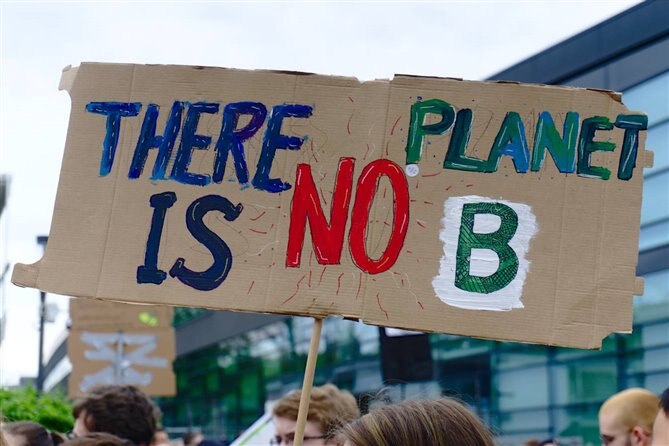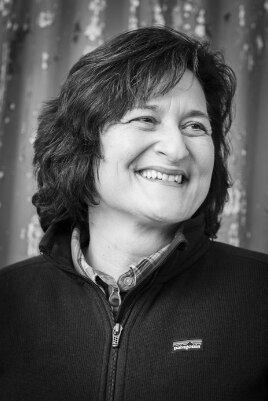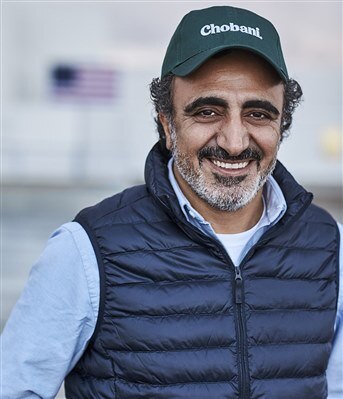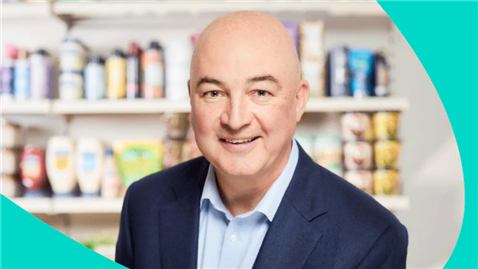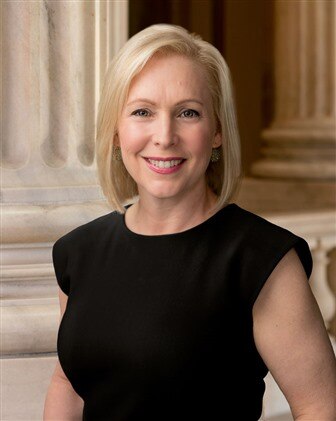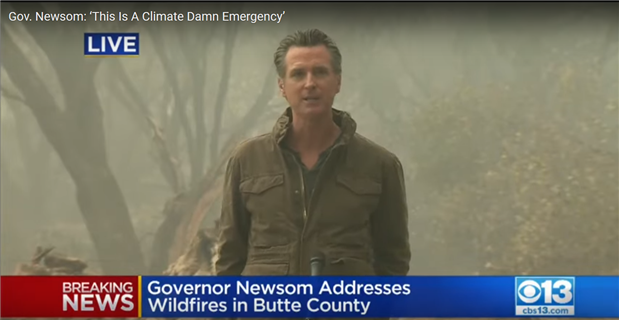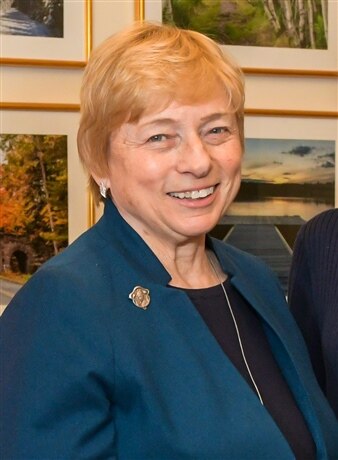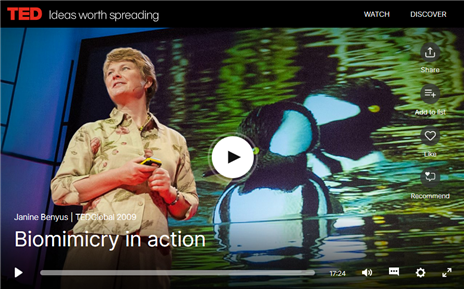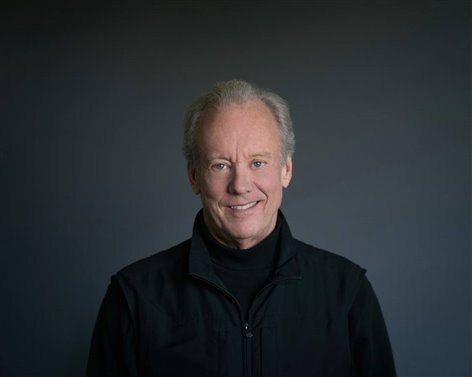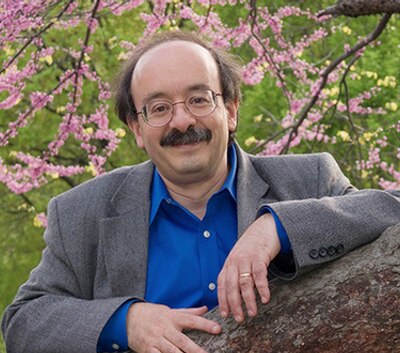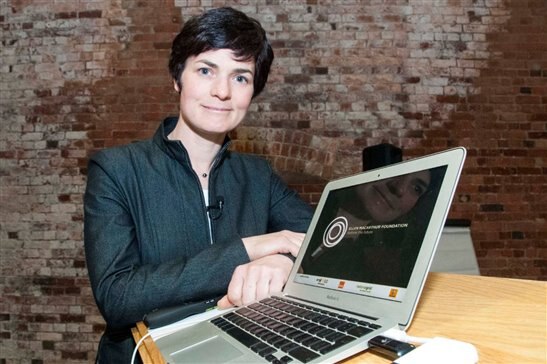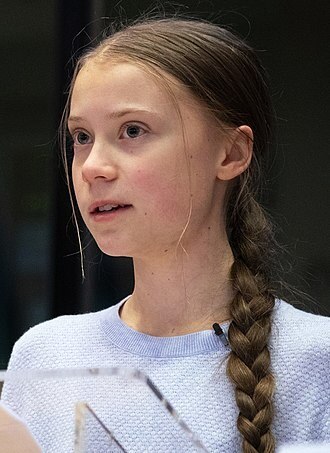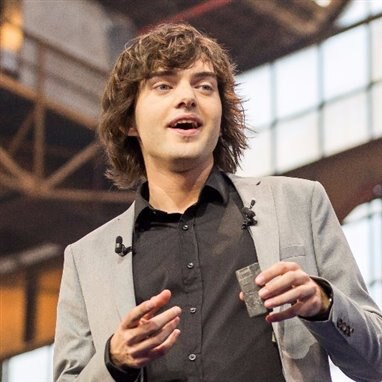The business of engineering is often to fix a problem...
For decades, we’ve heard the mantra, “Reduce, Reuse, Recycle.” We learn about recycling in grade school and beseech our parents and caregivers to try harder at home. But the novelty fades, and we’re lulled back into familiar routines. And, in many homes, not even this most basic tenet of sustainable living takes hold.
To top it off, more than ever, we look to one-time-use and disposable conveniences to help with the everyday hubbub of life. With the COVID-19 pandemic, our country and the world have taken a big step back from some of the progress we had made with reducing single-use plastics and other containers. Reusable bags at the grocery store were gaining wider use, and some customers had gotten into the habit of bringing their reusable mugs to their favorite coffee shops. Much of that is now on hold, as disposable gloves, masks and disinfectant wipes take center stage, littering sidewalks and clogging landfills.
At the same time, the pandemic hasn’t given us a reprieve from extreme weather and natural disasters. Some of us live in dry, water-stressed areas where residents abide by strict water shut-off schedules or have had to abandon homes due to massive forest fires. Others live in coastal areas where sandbagging houses and businesses are a way of life, and many are forced to flee to higher ground to escape hurricanes and flooding. As residents face these life-threatening natural disasters, more and more everyday people can’t help but wonder if they’re linked to climate change.
According to a survey conducted by the Yale Program on Climate Change Communication (YPCCC), “there are roughly four alarmed citizens for every one American dismissing the science of climate change.”
“It indicates a massive shift in our political, social, and cultural understanding of climate change,” senior research scientist and director of the YPCCC, Anthony Leiserowitz, said.
Now that more people are listening, here’s where the experts and leaders come in. They monitor weather, rising land and ocean temperatures, melting ice shelves in the Arctic, ocean garbage patches, and changes in animal and insect habitats and populations, to name a few.
To put things into perspective, here’s a roundup of business people, policymakers, academics, and young leaders who are imploring everyday citizens, corporations and governments to act NOW to slow climate change.
Business
Photo Credit: Patagonia Press Release, January 2014
1. Rose Marcario, Former CEO, Patagonia
“The urgency of the climate crisis and the extinction that we’re facing is so urgent that we felt like everybody’s mission, every business’ mission should be to save our home planet… We’re facing this extinction crisis, and we can’t turn away from it. We need the rest of business to turn toward solutions and innovations and the things that will help us survive.”
For Marcario, companies don’t have to sacrifice profitability for social and environmental responsibility. Rather, she contends that it’s the company’s responsibility to develop a good product that is responsibly produced. “I think it's really a false choice to say you can either make money or do good,” Marcario said to a group at Columbia Business School. During her 12 years at Patagonia, Marcario quadrupled revenue to $1B annually during her tenure.
Photo Credit: Wikipedia, Outdoor portrait of Hamdi Ulukaya, 2017
2. Hamdi Ulukaya, Founder, Chairman and CEO, Chobani
“If you look at our political and social landscape, there’s never been more of a need for businesses to step up. There’s a need for businesses to shine and transform. The ones who don’t transform will, perhaps, not even last the next 20 years. The companies that do right by their employees, communities, environment, consumers and the world will be the ones featuring in the next chapter of our world.”
Ulukaya’s efforts in corporate social responsibility are largely framed around preserving and creating local jobs and economic opportunities as well as promoting animal welfare on farms and setting “north star goals” for their manufacturing facilities, such as 100% renewable energy, water neutrality and zero waste to landfill.
Chobani recently opened an 85,000-square-foot, sustainable office building and research and innovation lab in Twin Falls, Idaho. Ulukaya is also working toward a fair-trade designation for products along the dairy supply chain that adhere to specific social and environmental standards.
Photo Credit: Unilever Website
3. Alon Jope, Unilever CEO
“The planet is in crisis, and we must take decisive action to stop the damage,” says Unilever CEO Alan Jope. “We will reduce the impact that our products and our operations have on the environment, and we will do our part to bring the planet back to health.”
The consumer has spoken. And while experts and everyday people alike may have it on good authority to be wary of splashy, corporate stretch goals and pie-in-the-sky environmental platitudes, companies that make consumer goods know that they must act to retain a growing number of socially and environmentally conscious customers. For instance, members of the millennial generation have been in the workforce for the past 20 years and have since become homeowners and parents. This much-loved scapegoat generation seeks to work for companies that give back to the communities in which they operate, care for the welfare of its employees, and offer products and services that employees are proud to represent. As consumers, homeowners and parents, millennials are willing to pay more for local and sustainably produced goods. Companies that are slow to innovate in this space are losing profitability.
In June 2020, Unilever unveiled a €1 billion Climate & Nature Fund that is financially supported by its brands. The “new range of measures and commitments” is in response to the company’s recognition that more “decisive action to fight climate change, and protect and regenerate nature, to preserve resources for future generations” is imperative.
U.S. Government
Photo Credit: U.S. Senate
4. Kirsten Gillibrand, New York Senator, Former Candidate for Democratic Nomination for U.S. President
“We’re already seeing the effects of climate change on communities across our country and the world. Climate change is the most serious threat to humanity today, and we need immediate and bold action to address it before it’s too late. Climate action should be this generation’s moonshot. To save our planet, the energy, talents, and commitment of every American will be required, from our farmers and workers to our scientists and entrepreneurs. The next president has to be willing to take bold leaps to lead this effort and stand up to the climate change deniers, polluters, and oil and gas special interests. I will because we can’t afford not to.”
Senator Gillibrand is a member of the U.S. Senate Committee on Environment and Public Works. In September 2020, the Senate passed bipartisan wildlife conservation legislation to reauthorize or establish several important government wildlife conservation programs. America’s Conservation Enhancement (ACE) ACT was unanimously passed by the Senate.
Protecting wildlife and their habitats isn’t just a feel-good exercise. A recent study published in the journal Nature, indicates that “restoring natural landscapes damaged by human exploitation can be one of the most effective and cheapest ways to combat the climate crisis while also boosting dwindling wildlife populations …” Restoration and protection efforts could result in carbon sequestration “equating to half of all human caused greenhouse gas emissions since the industrial revolution.”
Video Credit: CBS 13
5. Gavin Newsom, Governor of California
“While we’re (California) leading the nation in low-carbon green growth, as we’ve led the nation in our efforts to decarbonize our economy, we’re going to have to do more, and we’re going to have to fast-track our efforts,” Newsom told reporters as he stood among charred trees in Oroville. “While it’s nice to have goals to get to 100% clean energy by 2045, that’s inadequate. “Across the entire spectrum, our goals are inadequate to the reality we’re experiencing,” he added.
If running a state weren’t enough to handle, Governor Newsom has worked tirelessly with local and state agencies to manage their response to the unprecedented number of wildfires in California. Standing amidst scorched land and trees, Governor Newsom said they were facing a “climate damn emergency,” with more than 3.2 million acres burned this year throughout the state.
To further environmental sustainability efforts throughout California, in January 2020, Newsom proposed the Climate Catalyst Revolving Loan Fund. This $1 billion fund is directed at “small businesses and organizations that have sustainability goals but may not have the capital to develop green infrastructure.”
Photo Credit: U.S. Congress image on Wikipedia
6. Janet Mills, Governor of Maine
“In the not-too-distant future, my grandchildren and yours could reach my age and live in a Maine that we would not recognize. So we must act.” – January 2019 inauguration speech
Roughly five months after she was sworn into office, Governor Mills presented a bill that would create a 27-member climate change council that would focus on “dramatically reducing greenhouse gas emissions and transitioning Maine to what she describes as a ‘low-carbon economy.’”
“With the signing of these bills, Maine is ushering in a new era of clean energy and climate leadership,” said Governor Janet Mills. “The Maine Climate Council will develop comprehensive action plans to meet our ambitious emissions reductions goals, and the renewable energy legislation will spur clean energy development and investments that will increase production of homegrown, renewable energy and create good paying jobs for the people of Maine. Maine is once-again leading on clean energy.”
The following month, Governor Mills signed renewable energy and climate change bills into law. The bills charge the Maine Climate Council with addressing the following goals:
By 2030:
Reduce Maine’s greenhouse gas emissions by 45 percent; and
Increase the state’s Renewable Portfolio Standard from 40 percent to 80 percent.
By 2050:
Reduce Maine’s greenhouse gas emissions by 80 percent; and
Increase the state’s Renewable Portfolio Standard to 100 percent.
In addition, the Council will create new incentives for energy-efficient heating, as well as new solar incentive programs.
Academics & Business Philanthropists
Video Credit: TED Talks
Embed: <div style="max-width:854px"><div style="position:relative;height:0;padding-bottom:56.25%"><iframe src="https://embed.ted.com/talks/lang/en/janine_benyus_biomimicry_in_action" width="854" height="480" style="position:absolute;left:0;top:0;width:100%;height:100%" frameborder="0" scrolling="no" allowfullscreen></iframe></div></div>
7. Janine Benyus, Biologist, Author, Co-Founder, Biomimicry Institute
“We have to grow the capacity of this planet to create more and more opportunities for life. Really, that’s what other organisms do as well. In ensemble, that’s what whole ecosystems do. They create more and more opportunities for life …”
“This is the magic trick. Life creates conditions conducive to life. It builds soil, it cleans air, it cleans water, it mixes the cocktail of gases that you and I need to live, and it does that in the middle of having great foreplay and meeting their needs, so it’s not mutually exclusive. We have to find a way to meet our needs while making of this place an Eden.”
Benyus is a much-celebrated academic, expert and speaker on biomimicry, a practice that “emulates nature’s designs and processes (e.g., solar cells that mimic leaves) to create a healthier, more sustainable planet.”
In 1998, she co-founded Biomimicry 3.8, the first “bio-inspired” consulting firm. As a consultant in this space, she collaborated with international brands and Fortune 500 companies, such as Nike, Procter and Gamble and Levi’s, to name a few. In this work, she helped identify opportunities for sustainable design based in biomimicry.
To further spread biomimicry in design thinking, Benyus co-founded the Biomimicry Institute in 2006. This nonprofit organization hosted “annual global biomimicry design challenges on massive sustainability problems.” There, students and practitioners collaborated to solve design challenges.
“We’re awake now, and the question is how do we stay awake to the living world? How do we make the act of asking nature’s advice a normal part of everyday inventing?”
- Janine Benyus
Photo Credit: 2017  DuHun Photography via Wikimedia Commons
DuHun Photography via Wikimedia Commons
8. William McDonough, Architect, Pioneer of the Circular Economy, Co-Founder of the Cradle-to-Cradle Concept
“The opportunity (for circular design and sustainability) is so immense and the take-up so small and slow. I keep looking at the frameworks that people can adopt, but also those acupuncture points where we can actually do the work that illustrates what we’re talking about instead of just talking or articulating theory. This has been a really important part of the framing of circular economy, and it’s time to put it into play.”
In large part, McDonough’s work focuses on designing products and services with the entire lifecycle at the forefront. Products can and should be designed so that when they reach their end of life or usefulness, the components can be broken down and serve as feedstocks for new products.
Over the years, McDonough has worked with leaders in business and government and collaborated with fellow sustainability practitioners in manufacturing, design, academics, innovation and nonprofit endeavors. He is also the author of several books on the circular economy, as well as other environmental sustainability topics.
Photo Credit: Twitter Profile Image
9. Amory Lovins, Physicist, Co-Founder and Chairman Emeritus, Rocky Mountain Institute
“The U.S. can cut its oil imports to zero by 2040, eliminate oil use entirely by 2050, and make money. What's stopping us? Well, as Marshall McLuhan said: 'Only puny secrets need protection. Big discoveries are protected by public incredulity.'”
“I'm not an environmentalist. I'm a cultural repairman. It's all about efficient and restorative use of resources to make the world secure, prosperous and life-sustaining.”
By many accounts, Lovins appears to be an affable genius with a knack for always being right in a slightly rattling way. He dropped out of Harvard and Oxford University because the curricula for his chosen fields of study were too constricting. His 4,000-square-foot, fossil-fuel-free home in Old Snowmass, Colorado, doesn’t have or need a conventional furnace. Needless to say, he thinks and lives outside the box. He has won countless national and international awards, and his ideas on integrative design and forward-thinking on energy efficiency and renewables are sought after by the world’s leading companies, as well as global organizations and governments.
Photo Credit: VHR Blog
10. Dame Ellen MacArthur, Founder of the Ellen MacArthur Foundation
Today’s textile economy is so wasteful that in a business-as-usual scenario, by 2050 we will have released over 20 million tonnes of plastic micro-fibers into the ocean. While existing mitigation efforts are essential to reduce the negative impacts of today’s system in the near term, we need to start the transition to a fundamentally different and better system — a new textiles economy. We need to raise the level of ambition and aspiration by working towards a common vision and setting clear targets.
In 2010, the Ellen MacArthur Foundation was launched to “work with, and inspire, business, academia, policymakers, and institutions to mobilise systems solutions at scale, globally.” The Foundation’s mission is to “accelerate the transition to a circular economy,” where products are designed with lasting durability and reuse at their core. The foundation aims to more widely disseminate these circular economy principles and design thinking.
Two name a couple of important milestones, in 2018 the Foundation announced its Make Fashion Circular Initiative to drive “collaboration between industry leaders and other key stakeholders to create a textiles economy fit for the 21st century.” The goal is to promote the use of safe, renewable materials, increase the use or durability of textiles, and produce fabric in such a way that it can easily be upcycled at the end of its usefulness. In June 2020, 50+ global leaders signed the Foundation’s circular economy statement with the idea that “It’s time to step up, not step back.”
Photo Credit: Wikipedia
11. Greta Thunberg
"My message is that we'll be watching you.
"This is all wrong. I shouldn't be up here. I should be back in school on the other side of the ocean. Yet you all come to us young people for hope. How dare you!
"You have stolen my dreams and my childhood with your empty words. And yet I'm one of the lucky ones. People are suffering. People are dying. Entire ecosystems are collapsing. We are in the beginning of a mass extinction, and all you can talk about is money and fairy tales of eternal economic growth. How dare you!”
At the age of 17, Thunberg is no stranger to the world stage, having garnered the attention of everyday citizens, environmental activists and government leaders within the global community. Thunberg’s ability to inspire activism in youth around the world has been referred to as the “Greta effect.”
Despite COVID-19 pandemic restrictions on social gatherings, Thunberg pressed ahead with limited in-person and virtual climate protests to commemorate the second annual global climate strike on September 25, 2020. The school strikes were planned in as many as 3,500 locations in cities around the world. In 2019, it was estimated that 6 million people participated in the week-long global climate protests.
At this year’s in-person and virtual rallies, Thunberg said, “Fridays For Future and the youth climate movement are striking again around the world, in a safe way and following Covid-19 guidelines, to demand those in power treat this like the urgent crisis it is.”
And if upsetting our youth over slow-moving, underwhelming climate policy weren’t enough, now it seems as though some academic institutions are cutting funding for environmental studies. In Australia, the government has implemented university funding reforms that will result in “$10,000 less funding per year for each student undertaking environmental studies.” University administrators worry that these reforms will likely result in fewer students pursuing these degrees and diminished academic experiences. Thus, fewer graduates will enter the workforce in environmental careers at a time when we arguably need more sustainability and climate change experts than ever before.
12. Boyan Slat, Dutch Inventor and Founder, The Ocean Cleanup
“I hope that this will be a turning point for the plastic pollution problem.”
“For sixty years it has only gotten worse and worse. Now hopefully we’re turning the tide.”
At the age of 18, Boyan Slat founded The Ocean Cleanup, a nonprofit organization comprised of more than “90 engineers, researchers, scientists and computational modelers.” The team members are dedicated to preventing the flow of plastic from rivers to oceans, as well as removing existing plastic pollution from the oceans.
In September 2018, The Ocean Cleanup launched System 001, a $23 million “floating barrier nearly 2,000ft long,” in the hopes that it would successfully complete a month-long, 1,300-mile journey from San Francisco to the Great Pacific Garbage Patch to trap and remove ocean plastic. According to the United Nations, it’s estimated that eight million tons of plastic accumulate in the ocean every year.
While the initial launch was met with complications-escaping plastic and a fracture in the floater that caused an 18-meter section to disconnect-the team has since made adjustments to the system. In June 2019, the team launched System 001/B from Vancouver Island. Upon its arrival in the Great Pacific Garbage Patch, scientists conducted a series of tests which indicated that the upgrades were functioning properly.
The Ocean Cleanup’s work continues as they work toward their goal of removing half the plastic in the Great Pacific Garbage Patch in five years.

